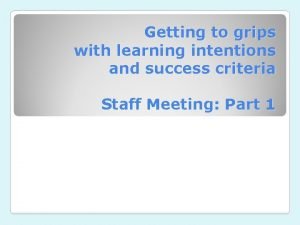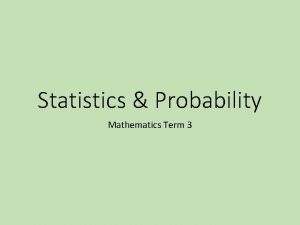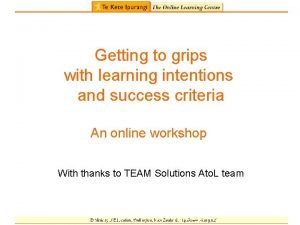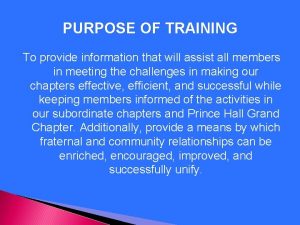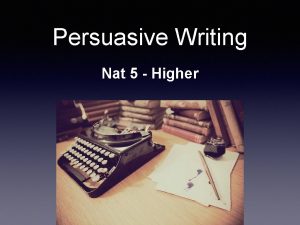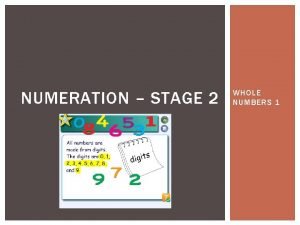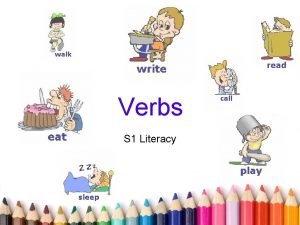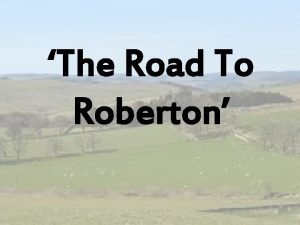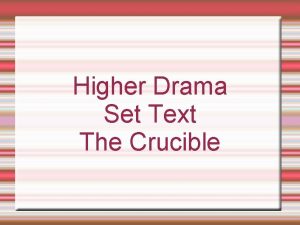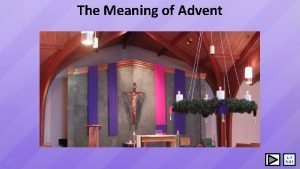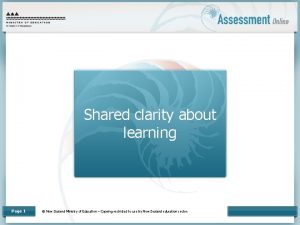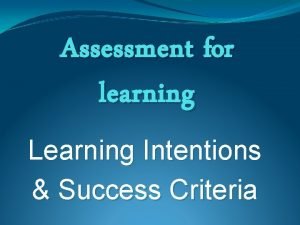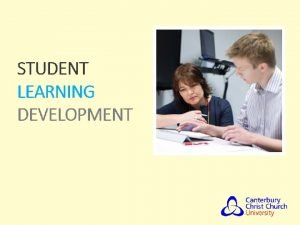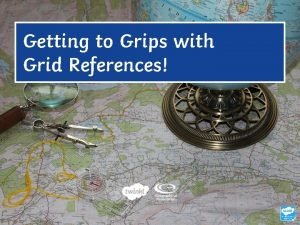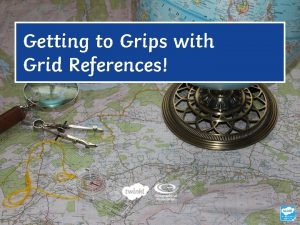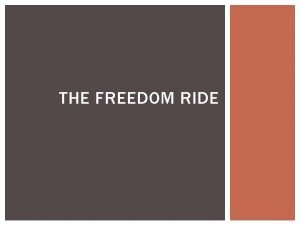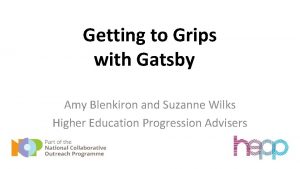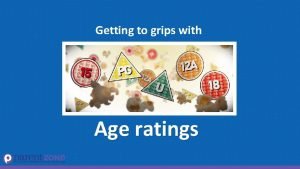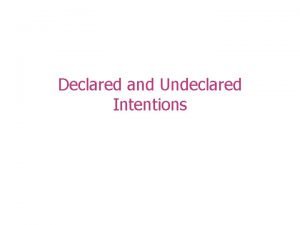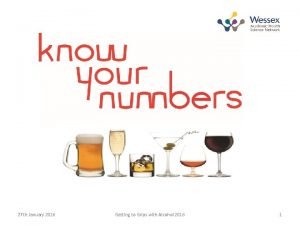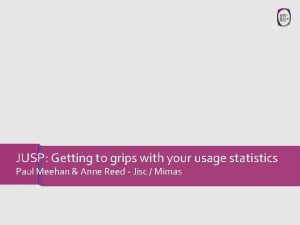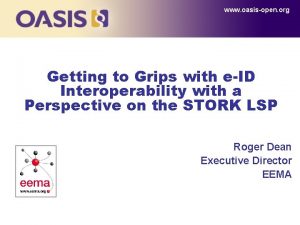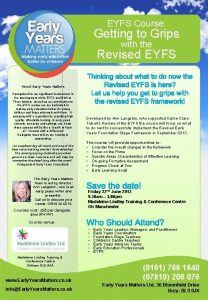Getting to grips with learning intentions and success




















- Slides: 20

Getting to grips with learning intentions and success criteria An online workshop With thanks to TEAM Solutions Ato. L team

Who will find this workshop useful? • Teachers • Syndicates / departments • Assess to Learn (Ato. L) facilitators How to use this workshop • To update, review and/or reflect on formative assessment practice. • As a focus for professional development in exploring assessment for learning. • To support Ato. L programmes in schools.

The learning intention for this workshop Learning intention To learn to construct learning intentions and success criteria. Success criteria I can: • identify open and closed learning intentions • separate learning intentions from their context • construct learning intentions and success criteria in my own subject area

Why use learning intentions? Using learning intentions helps students develop a picture of what is expected of them from the learning. “Many pupils do not have such a picture and appear to have become accustomed to receiving classroom teaching as an arbitrary sequence of exercises with no overarching rationale… When pupils do acquire such overview, they then become more committed and more effective as learners: their own assessments become an object of discussion with their teachers and with one another…” Black & William (1998) P 10

Clarifying terms All these terms mean the same thing: • Learning intentions • Learning outcomes • Learning objectives

Learning Intentions defined What are we going to learn? Learning intentions may be written like this: • We are learning to … • To be able to … • To understand / explain / discuss etc • Today we will be able to …

Separating the learning intention from the context If learning intentions are not written clearly the result may be: • a mismatch of lesson focus with activities • an inappropriate focus • awkward success criteria that don’t fit the learning. By separating the learning intention from the context students can apply the skill or concept in a number of different contexts. It is also much easier to write success criteria for de-contextualised learning intentions.

Examples of learning intentions with and without the context (Clarke, 2005) Learning intention with context Learning intention without context Context or activity To present an argument for and against vegetarianism To present an argument including ‘for’ and ‘against’ positions Vegetarianism To produce a questionnaire about shopping patterns To be able to investigate the distribution of an economic activity Interviews with family about where they shop and how their shopping patterns have changed To order numbers to 10 To order written numbers Numbers to at least 10 using number cards Clarke, S. (2005). Formative Assessment in Action: weaving the elements together.

Learning Intentions: what students thought they were learning (Clarke 2005) Learning intention with context What students thought they were learning Learning intention without context What students thought they were learning now To write instructions to make a sandwich “I would learn how to make a sandwich”. To write instructions (A sandwich) “We would be learning to write instructions. ” To know why Samuel Pepys is important in understanding the events of the Great Fire of London “We would be learning about what happened and what he wrote. We would also learn how to put a fire out” To know how primary “We would learn to sources help us to find out about how find out about the other people lived. ” past (Great fire of London, Samuel Pepys) From Clarke, S. (2005). Formative Assessment in Action: weaving the elements together.

Concept and knowledge learning objectives Concepts are the big ideas that are explored over time. They need to be broken down when writing learning intentions so that learners can see how the day’s learning relates to the overall learning intention. Learning intention To understand the importance of a healthy diet. The long-term over-arching concept To understand the importance of a healthy diet. Its broken down version for today To understand the impact of protein. The process involved To use information retrieval skills.

Success criteria – why are they important? How do we know we have met the learning intention? When success criteria are used … • the learning becomes more explicit • students can confirm, consolidate and integrate new knowledge • future learning is scaffolded • students can see what quality looks like.

Types of learning intention and success criteria Not all learning is the same so not all learning intentions and success criteria are the same. There are: • Closed skills – teaching of skills, concepts, knowledge • Open skills – application of skills, concepts, knowledge

Closed skills are either right or wrong. Success criteria for closed skills are either the steps involved or what you need to remember to achieve the learning objective. Learning intention To share a quantity into a ratio. Success criteria I can: • add the parts e. g. 2: 3 2 +3+5 • write each ratio as a fraction 2/5 : 3/5 • multiply each fraction by the whole e. g. 2/5 of 20.

Open skills are neither right nor wrong. Lesson objectives need examples and discussion about quality. Learning intention To understand explain the use of musical instruments and elements in programmatic music. Success criteria I can: • create a balanced 3 -section composition • use tone, pitch and dynamics to reflect the events and mood of the story • use instruments creatively. The success criteria provide a ‘menu’ of devices that will help to produce quality work, where not all need to be included.

An example using Languages (Te Reo) Achievement objective (concept) To communicate, including comparing and contrasting habits and routines. Learning intentions (developed from concept) I can: • communicate about daily routines (context – school day) • compare my daily routine with that of someone else • contrast routines with what I like to do in my free time. Each of these may be broken down further…

Learning intention To communicate about daily routines (context – school day). Success criteria I can: • use vocab associated with morning routines • construct simple sentences associated with routine • use ‘ka’ to relate a series of events • use words and phrases to join sentences.

An example at senior level (Te Reo) Achievement objective To give and respond to information and opinions, giving reasons. Learning intentions I can: • research my topic using the Action Research guidelines • write a persuasive essay.

Learning intention To write a persuasive essay Success criteria I can: • write a paragraph introducing the topic and expressing my opinion • write a paragraph stating a reason that supports my argument with examples • use linking words and phrases that we have studied before to enhance my essay for example: » kaore e kore – no doubt, » ehara – on the contrary. » Ka haere whakamua, Me hoki whakamuri – to go forward you have to look at the past • write a concluding paragraph re-stating my opinion with supporting reasons.

Keeping the learning to the forefront Learning intentions and success criteria need to be readily available to students. Think about ways this could be done in your classroom: • For the class • For individual students

References Black, P. , & Wiliam, D. (1999). Assessment for learning: Beyond the black box. Cambridge: University of Cambridge. Clarke, S. (2005). Formative assessment in action: Weaving the elements together. United Kingdom: Hodder Education.
 Learning intention examples
Learning intention examples Learning intentions and success criteria examples
Learning intentions and success criteria examples Learning intentions and success criteria for mathematics
Learning intentions and success criteria for mathematics Learning intentions examples
Learning intentions examples The secret of getting ahead is getting started
The secret of getting ahead is getting started Name that star
Name that star Jabberwocky alliteration
Jabberwocky alliteration Persuasive writing images
Persuasive writing images Write a number in expanded form. 637
Write a number in expanded form. 637 Annotate poem generator
Annotate poem generator Fractions learning intentions
Fractions learning intentions Half-turn symmetry
Half-turn symmetry Verb viper
Verb viper Poetry learning intentions
Poetry learning intentions Poetry learning intentions
Poetry learning intentions Poetry learning intentions
Poetry learning intentions Reflective phrases
Reflective phrases Acrostic poem success criteria
Acrostic poem success criteria Drama learning intentions
Drama learning intentions Learning intentions meaning
Learning intentions meaning Absolum duffy
Absolum duffy
